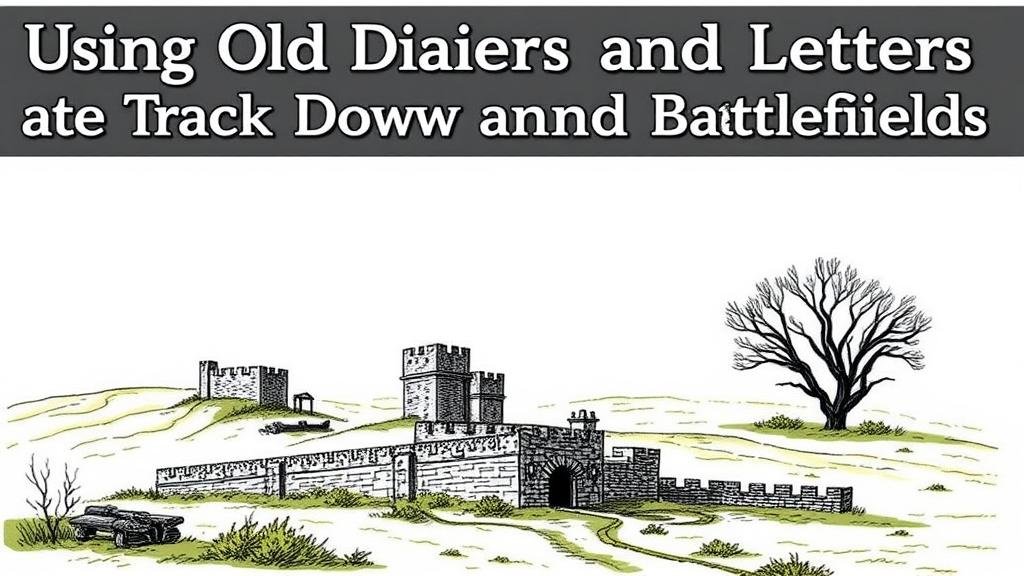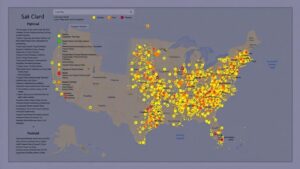Using Old Diaries and Letters to Track Down Hidden Forts and Battlefields
Using Old Diaries and Letters to Track Down Hidden Forts and Battlefields
The use of primary historical sources such as diaries and letters has emerged as a significant approach in the field of archaeological research and historical analysis. These documents not only provide personal narratives but also contain invaluable geographical, social, and military information that can aid researchers in locating hidden forts and battlefields. This article explores methodologies, case studies, and the implications of utilizing these artifacts in modern historical inquiry.
The Importance of Primary Sources
Diaries and letters offer firsthand accounts of historical events, capturing the thoughts and experiences of individuals during critical moments. provide context that is often missing from official records and can reveal the lived experiences of soldiers, civilians, and military leaders. For example, the diary of Mary Chesnut, a Southern woman during the American Civil War, contains descriptions of troop movements and battles that can lead researchers to specific locations.
Methodologies of Research
In tracking down hidden forts and battlefields, researchers employ several methodologies:
- Textual Analysis: This involves closely reading diaries and letters to extract geographical and historical information.
- Geolocation Techniques: Using the geographical references found in these documents, researchers use modern mapping tools like Geographic Information Systems (GIS) to pinpoint potential sites.
- Laboratory Archaeology: In conjunction with historical research, archaeologists conduct site surveys and excavations based on insights gained from the documents.
Case Study: The American Civil War
The American Civil War (1861-1865) is a prime example where the integration of personal diaries and letters has led to the discovery of forgotten battlefields and forts. Historians and archaeologists have utilized documents such as the letters of Union soldier Joshua Lawrence Chamberlain, which not only describe battles but also detail troop positions and movements. His entries regarding the defense of Little Round Top during the Battle of Gettysburg have been instrumental in pinpointing locations that were previously unmarked.
From Letters to Locations: A Real-World Application
One prominent case is the discovery of the Battle of Brandywine’s significant details through the letters of Major General George Washington. His correspondence not only included strategic decisions but also descriptions of troop encampments and battlefield geography. These insights directed archaeological surveys in the Brandywine area, leading to the discovery of military artifacts and establishing a clearer narrative of the battle that took place on September 11, 1777.
Challenges and Limitations
While the use of diaries and letters is invaluable, several challenges must be acknowledged:
- Bias and Subjectivity: Personal accounts are often subjective and may include bias based on personal experiences or perspectives.
- Limited Context: Diaries and letters may not provide comprehensive views of larger events and can lack critical information.
- Preservation Issues: Many old documents face deterioration, making access and analysis difficult.
Future Directions
The future of historical research using diaries and letters looks promising, particularly with advancements in technology. Digital archiving and transcription projects, such as the Civil War Diaries project, encourage wider access to these materials and facilitate collaborative research among historians and archaeologists. As records and documents continue to be digitized, researchers can employ text mining techniques to uncover patterns and connections that were previously elusive.
Conclusion
Utilizing old diaries and letters to track down hidden forts and battlefields represents a confluence of history, technology, and archaeology. By examining these primary sources, researchers can uncover forgotten narratives and geographical locations that enhance our understanding of pivotal historical events. As we move forward, it is crucial to embrace innovative methodologies that enhance the study of these documents, ensuring that the stories they tell continue to enrich our historical landscape.



